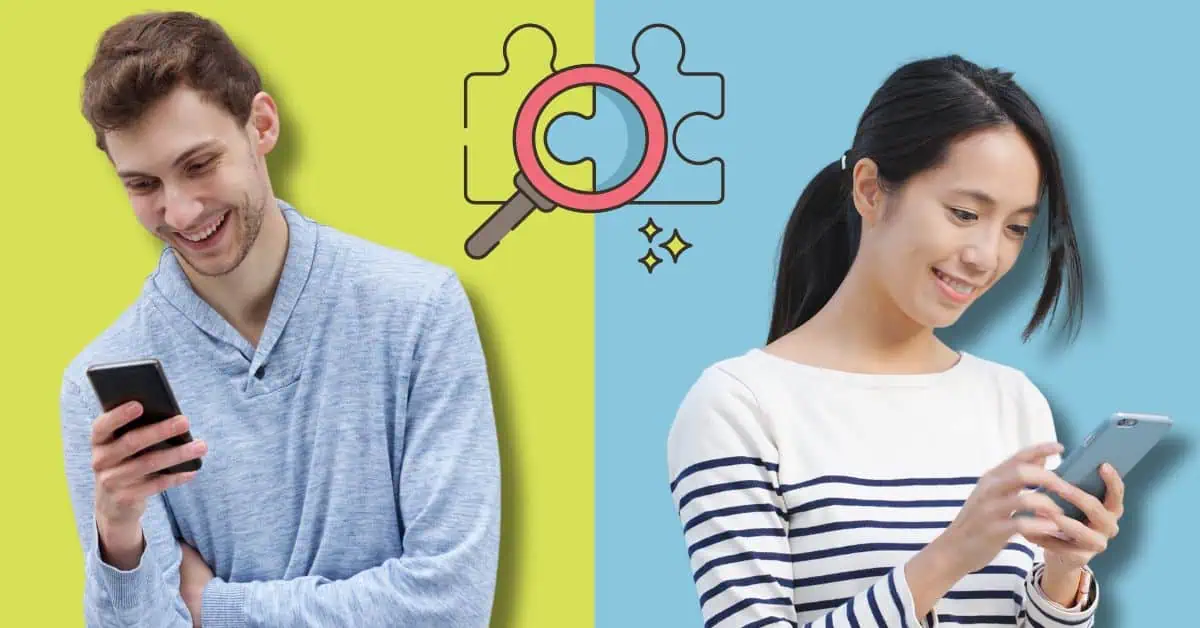Did you know that over half, a whopping 60%, actually, of online daters have taken a compatibility test on a dating app, hoping it will get them closer to finding their perfect match? These tests, usually quick to boast about their scientific and psychological foundations, claim to gauge compatibility by analyzing responses to a series of questions. But do they really have that much power? Can they possibly predict a lasting love affair?
As dating apps continue to dominate the romance scene, the effectiveness of these compatibility tests should be questioned—can something as simple as a digital questionnaire grasp the innate intricacies of human emotion and connection? Or are they merely a clever marketing tactic designed to keep us swiping and clicking? When a huge portion of singles are counting on these tests to help them navigate the dating scene, we need to scrutinize these quizzes and see whether they can genuinely lead people to a compatible romantic partner or if they are just a stab (or swipe) in the dark.
Are we putting too much faith in algorithms to find our other half, or do these tests give us real insights into compatibility? We’ll examine the science behind these tests, and by the end, we’ll have an answer about whether compatibility tests are a legit tool in the search for love or a snake oil masquerading as a solution.
What Are Compatibility Tests on Dating Apps?
Compatibility tests on dating apps are designed to help users find potential partners who are well-suited to their personalities, values, and interests. These tests typically involve answering a series of questions that assess various aspects of an individual’s character and preferences. The goal is to match users with others who have compatible traits, thereby increasing the likelihood of a successful and fulfilling relationship.

Types of Compatibility Tests
- Personality Quizzes: These tests evaluate your personality traits, such as introversion vs. extroversion, emotional stability, and openness to new experiences. By understanding your personality, the app can match you with someone whose traits complement yours.
- Interest-Based Surveys: These surveys focus on your hobbies, activities, and lifestyle preferences. Matching users with similar interests can create a strong foundation for shared activities and conversations.
- Value Assessments: These tests explore your core beliefs and values, such as your views on family, career, religion, and life goals. Finding someone who shares your values is super important for long-term compatibility.
- Behavioral Questions: Some tests include questions about handling conflict, making decisions, and expressing affection. Your answers can help match you with someone who has compatible relationship habits and emotional behaviors.
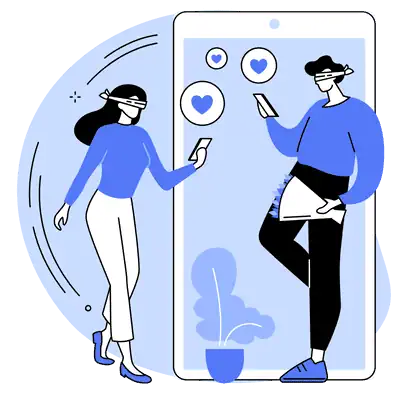
Examples from Popular Dating Apps
- eharmony: Known for its comprehensive compatibility matching system, eharmony uses a super detailed questionnaire (it takes over 30 minutes to complete) that covers personality traits, values, and interests. The platform claims to use scientific methods to create highly compatible matches.
- Elite Singles: This app targets professionals seeking long-term relationships. It uses a personality test based on the Five-Factor Model, which assesses traits like openness, conscientiousness, extraversion, agreeableness, and neuroticism.
- OkCupid: OkCupid uses a range of questions covering various topics, from lifestyle choices to political views. Users can choose which questions are most important to them, helping the app prioritize matches based on common values and interests.
- Match.com: Match.com features a compatibility test called “Match Questions,” which users can answer to provide wisdom about their personality and preferences. The app then uses these responses to recommend compatible matches.
- Plenty of Fish (POF): POF offers a “Chemistry Test” that assesses personality traits and relationship needs. This test helps users find matches with compatible emotional and psychological characteristics.
- Hinge: Hinge focuses on creating meaningful connections through its “We Met” feature, which gathers user feedback after dates. While not a traditional compatibility test, it helps the app refine its matching algorithm based on real-world interactions.
- Coffee Meets Bagel (CMB): This app uses a combo of user preferences and social network connections to suggest matches. Users answer a series of questions so the app can understand their preferences and match them up with compatible individuals.
By leveraging different kinds of compatibility tests, dating apps try to create more meaningful and long-term connections for their users. Whether these tests truly deliver on their promises is yet to be seen.
How Compatibility Tests Work
Compatibility tests on dating apps draw from well-established psychological theories and models to assess and match individuals. The following are some of the scientific models that underpin these tests:
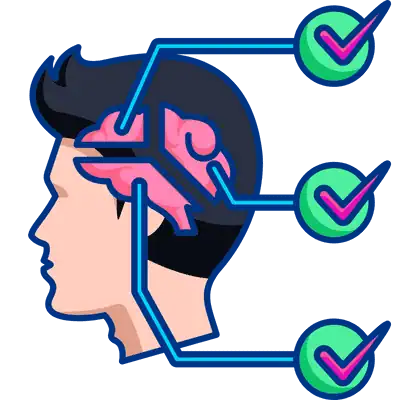
- Myers-Briggs Type Indicator (MBTI): This personality framework categorizes individuals into 16 personality types based on four dichotomies: Extraversion vs. Introversion, Sensing vs. Intuition, Thinking vs. Feeling, and Judging vs. Perceiving. Some dating apps use MBTI to match people with complementary personality types.
- Big Five Personality Traits: Also known as the Five-Factor Model, this theory assesses personality based on five dimensions: Openness to Experience, Conscientiousness, Extraversion, Agreeableness, and Neuroticism (OCEAN). Many compatibility tests use this model to gauge personality compatibility between users.
- Attachment Theory: This theory explores how early relationships with caregivers shape one’s approach to relationships in adulthood. Compatibility tests might assess attachment styles (secure, anxious, avoidant, or fearful-avoidant) to match users with complementary or compatible attachment styles.
- Interpersonal Attraction: Psychological research into what makes people attractive to each other, including factors like similarity, reciprocity, and physical attractiveness, informs the design of compatibility tests. These factors help apps to understand and predict potential matches based on shared interests and mutual attraction.
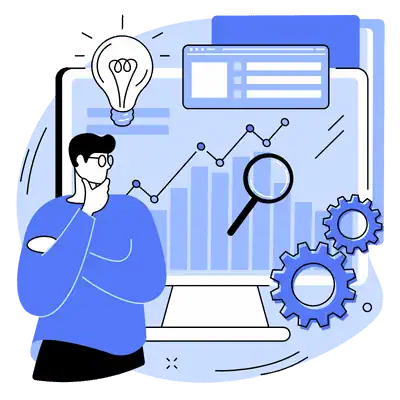
Data Collection and Analysis
The dating apps that use compatibility assessments also gather a lot of info from users via detailed questionnaires and user activity. How do they collect and analyze this data? Read on to see!
- Questionnaires and Surveys: Users answer a series of questions about their personality, interests, values, and preferences. These questions tend to range from multiple-choice to open-ended responses.
- Behavioral Data: Apps also collect data on user behavior, such as swipe patterns, message frequency, and interaction history. This data gives platforms good insights into user preferences and engagement.
- User Feedback: Some apps, like Hinge, collect feedback from users after dates to refine their matching algorithms. This real-world data helps improve the accuracy of compatibility predictions.
- Machine Learning: Advanced apps use machine learning to improve their matching algorithms continuously. By analyzing large amounts of data, these algorithms can identify patterns and trends that inform more accurate matches.
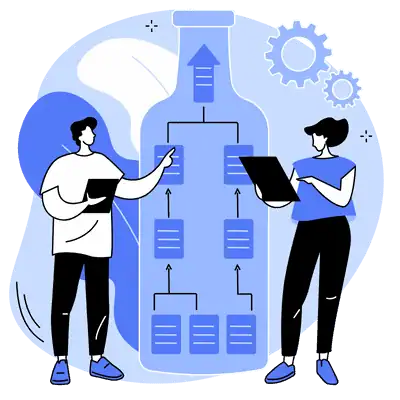
Algorithmic Matching
The nucleus of compatibility testing lies in the algorithms that process the test results and recommend matches by doing the following:
- Data Processing: The collected data is fed into the app’s algorithm, which processes the information to identify potential matches. This involves complex computations and statistical analysis.
- Scoring and Ranking: Each user’s responses are scored and ranked based on compatibility criteria. For example, a high score might indicate strong alignment in values or personality traits.
Matching Algorithms: These algorithms use various methods to suggest matches, including:
- Collaborative Filtering: This method analyzes user behavior and preferences to recommend matches based on similar users’ choices.
- Content-Based Filtering: This method matches users based on shared interests, values, and personality traits, derived from questionnaire responses.
- Hybrid Models: Some apps combine collaborative and content-based filtering to enhance the accuracy of matches.
- Continuous Learning: As users interact with the app, the algorithm learns from new data, refining its matching process. This continuous feedback loop helps the algorithm become more precise over time.
These psychological foundations, data collection methods, and sophisticated algorithms are used by dating apps to create matches that go beyond superficial and surface-level attraction.
The Benefits of Compatibility Tests
Compatibility tests can really boost the quality of your potential matches. How so? By focusing on common values and interests, these tests help you out in finding and connect with the people who are more likely to be on the same wavelength as you. Instead of endless swiping and praying to the gods of luck for the best, you get matched with singles who already tick many of your boxes, making your dating experience easier and more promising in terms of finding “the one.”

Enhanced User Experience
Yes, dating can be exhausting, but compatibility tests can make the entire process a little bit smoother and a lot more fun. These tests streamline your search by narrowing down potential matches to those who are genuinely compatible. This efficiency means you will spend less time sifting through profiles and more time getting to know people who are actually a good fit for you. It turns the sometimes frustrating dating grind into a more pleasant and focused experience.
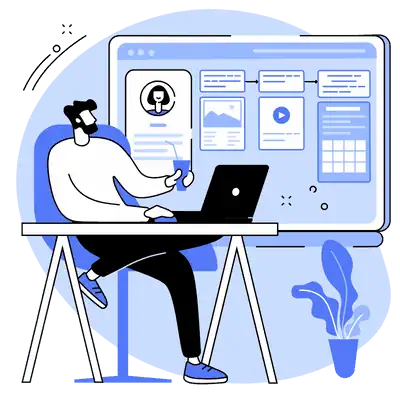
Psychological Comfort
Taking a compatibility test can also give daters a sense of reassurance and direction—knowing that the dating app is using your responses to find someone who compliments your personality can mean more confidence in your matches. Think of it as dating with a side of science, and that science can be your wingman in getting around the complex dating scene with a clearer sense of purpose and hope. This psychological comfort can make the dating journey feel less like a chore and more hopeful for singles looking for love!
The Limitations and Criticisms
One of the main criticisms of compatibility tests is that they oversimplify the complexities of human emotions and relationships. While these tests might provide a snapshot of personality traits and preferences, they can’t fully capture the nuances of human interaction and the dynamic nature of relationships. Human beings are incredibly multifaceted, and our feelings, behaviors, and interactions can’t be neatly categorized into any predefined boxes.
A test could classify someone as an introvert or extrovert, but this binary view doesn’t account for the fluidity of personality. People might be introverted in some situations and extroverted in others. Plus, values and interests can change over time, which needs to be considered. A person’s preferences at the start of using a dating app might evolve as they grow and experience new things. So, while we aren’t arguing that compatibility tests don’t provide useful insights, they do risk reducing the nuances of human behavior to an over simplistic checklist.

Accuracy and Reliability
Another pretty big concern is the accuracy and reliability of these tests in predicting long-term compatibility. While some dating apps claim to use scientific methods and psychological principles to create their tests, the reality is that predicting human relationships is an inherently unpredictable task. The success of a relationship hinges on countless variables that a test can’t possibly account for, like life experiences, personal growth, external pressures, and plain timing and luck.
Another factor? The conditions under which users take these tests can affect their responses. Someone could answer questions differently depending on their current mood or recent experiences. The pressure to present oneself in a favorable light might also translate into less-than-honest answers. All of these variables can skew the results, making the matches less reliable.
Longitudinal studies on the effectiveness of compatibility tests are limited, and the existing data is mixed. While some couples do find happiness through these methods, many might not experience the same success. The complexity of human relationships means that no test can guarantee a perfect match, and the over-reliance on such tools might lead to unrealistic expectations and disappointments.
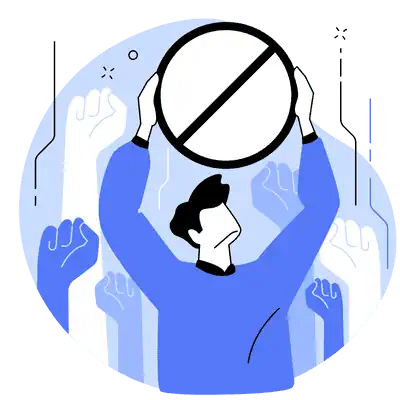
Bias and Exclusion
Compatibility tests can also be criticized for their inherent biases, which exclude certain individuals or groups. The design of these tests is typically based on cultural norms and assumptions that are not universally applicable—questions about lifestyle, family values, and social behaviors reflect the biases of the test creators, who are influenced by their own cultural backgrounds and personal beliefs.
These biases mean the exclusion of those who don’t fit into the normative frameworks used by the tests. For instance, people from diverse cultural backgrounds, non-traditional family structures, or those with unconventional lifestyles will find that the tests don’t accurately represent their values and preferences. This exclusion limits their chances of finding compatible matches on the app, perpetuating a cycle of underrepresentation and dissatisfaction.
And then there’s the risk that compatibility tests reinforce societal stereotypes and norms. By promoting certain traits and values as ideal, these tests marginalize those who don’t conform to these standards. This can discourage diversity and inclusivity in the dating pool, leading to a homogenized user base that doesn’t reflect the true diversity of human experiences and preferences.
While compatibility tests offer a structured approach to finding potential partners, they come with limitations and criticisms. The oversimplification of human emotions and relationships, the questionable accuracy and reliability of the tests, and the potential biases and exclusionary practices all raise important concerns. These tests can be a helpful tool in the dating process, but they should be used with an understanding of their limitations.
At the end of the day, the human element of dating—the unpredictable, complex, and personal aspects of forming a connection—cannot be fully captured by any test.
Real-Life Success and Failure Stories
Compatibility tests on dating apps promise to match users with potential partners who match up with their core values, interests, and personality traits. While these tests can lead to meaningful connections, long-term relationships, and marriages, they do have their limitations. Read on for some real-life success and failure stories from couples who met through these tests and a few insights from experts on their overall effectiveness.
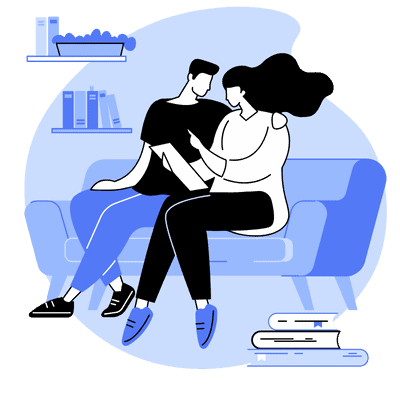
Success Stories
One success story from eharmony involves Paula and Richard, a couple from Lancashire, UK. They met after a delayed first date due to a miscommunication. Despite this rocky start, their connection was immediate and strong. Paula’s lively energy and Richard’s willingness to embrace new adventures, like mountain climbing, helped them build a firm foundation for their relationship. They even planned a blended family holiday, culminating in Paula proposing under the stars. Their story illustrates how eharmony’s extensive compatibility tests and its emphasis on honesty and strong connections can turn into a lasting love story.
Another heartwarming tale comes from Bumble, where Ashton and Matt found each other during the COVID-19 pandemic. Despite the isolation and uncertainty, their connection grew strong, leading to an engagement. Ashton credits Bumble for empowering her to take control of her dating life, and now she and Matt enjoy a fulfilling life together, complete with a mini-farm and lots of adventures.

Failure Stories
While success stories abound, not all matches end in a happily ever after. There are instances where high compatibility scores didn’t translate into real-life chemistry. One user shared that despite an excellent match on a popular dating app, the relationship fizzled out after a few dates. The initial online connection didn’t hold up under the dynamics of face-to-face interaction, showing the limitations of relying solely on compatibility tests.
In another case, a couple who seemed perfect on paper encountered irreconcilable differences after a few months of dating. They realized that their shared values and interests, which had initially brought them together, weren’t enough to go the distance in a long-term relationship. This underscores the importance of personal interaction and the complexity of human emotions that can’t be captured by algorithms alone.
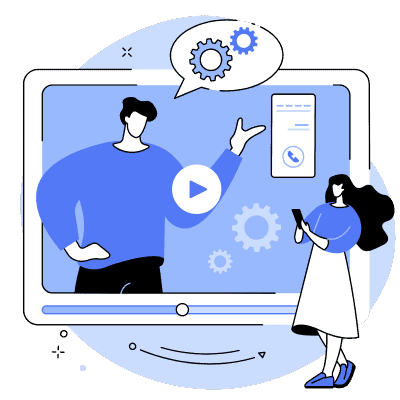
Expert Opinions
Relationship experts can give us some sage advice on these mixed outcomes. Dr. Helen Fisher, a biological anthropologist, points out that while compatibility tests can identify potential matches based on personality traits and values, they cannot predict the nuances of romantic chemistry and personal growth over time. She emphasizes that while these tests are useful tools, they should be augmented by personal judgment and real-life experiences.
Psychologist Dr. Terri Orbuch, known as “The Love Doctor,” agrees that while compatibility tests can provide a good starting point, they are not foolproof. She says that individuals should use these tests as guides rather than definitive answers. The true test of compatibility unfolds over time, as couples go through life’s ups and downs together.
All in all, compatibility tests on dating apps can absolutely facilitate meaningful connections and improve the dating experience, but they are not a guaranteed path to lasting love— nothing is! Personal effort, mutual understanding, and real-world interactions all play make-or-break roles in the success of any romantic relationship.
Comparing Compatibility Tests to Other Matching Methods
Dating apps largely rely on algorithmic matching to pair up users based on compatibility tests, and these assess personality traits, values, interests, and sometimes even psychological theories like the Myers-Briggs Type Indicator or the Big Five personality traits. The goal is to predict romantic compatibility and facilitate meaningful connections. But how do these algorithm-driven methods measure up against human intuition in dating?
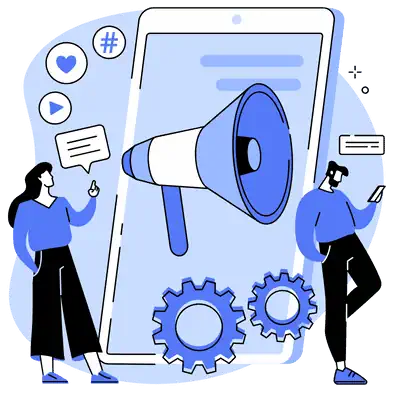
Effectiveness of Algorithmic Matching
Algorithmic matching is a structured approach to dating. By analyzing huge amounts of user data, algorithms are able to identify patterns and predict compatibility with a degree of precision that human intuition alone would likely miss. eharmony’s algorithm considers over 29 dimensions of compatibility, which has led to lots of success stories where couples say they feel really understood and connected right from the beginning.
But the science behind these algorithms is not infallible—it relies on users giving honest and accurate info, which can be a big variable. And algorithms do not account for the complicated, impulsive, and irrational nature of human attraction. Critics argue that no matter how advanced, algorithms will never fully grasp the chemistry and attraction that develops in person.
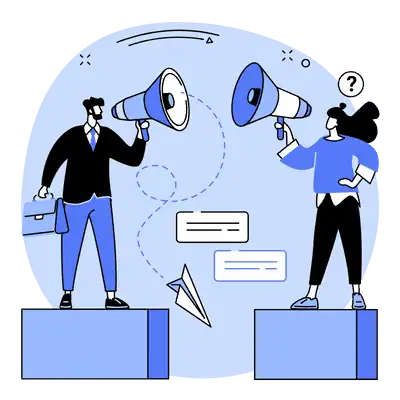
The Role of Human Intuition
Human intuition and conventional dating methods involve assessing potential partners based on direct interaction—people pick up on subtle cues, body language, and the overall vibe of a person, which algorithms cannot do. Intuition plays a major role in detecting the intangible elements of attraction, like a similar sense of humor, physical chemistry, and emotional resonance.
Then again, relying solely on intuition can also be flawed. People usually tend to carry unconscious biases and overlook compatible partners due to superficial judgments. Traditional dating can be hit or miss, requiring more time and effort to meet and evaluate potential matches.
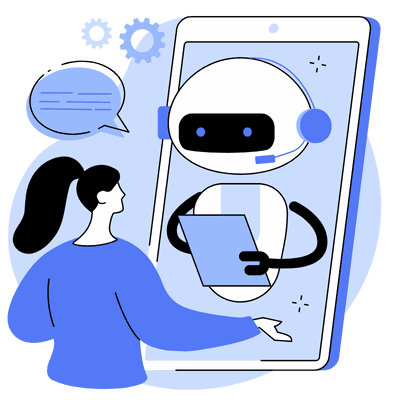
Hybrid Approaches
Combining algorithmic matching with human intuition could be just the ticket! Platforms like Hinge and Bumble encourage users to engage in conversations and provide interactive prompts that create more meaningful connections beyond the initial algorithmic suggestions. These dating apps use data-driven insights to make initial matches but let users take the wheel to explore and develop these connections further.
Hybrid approaches can mitigate the limitations of both methods. The initial algorithmic sorting can save time by filtering out less compatible matches, while the human element allows for the organic development of romantic relationships. This combination can definitely improve the user experience by offering a measured and balanced approach where technology and personal judgment work hand in hand.
The Benefits of Hybrid Models
Hybrid models can lead to higher satisfaction rates, as users benefit from the efficacy of algorithms and the personal touch of human interaction. It respects the complexity of human relationships by acknowledging that while data can indeed guide us, the final decision lies with the people involved.
Moreover, hybrid models promote a more dynamic dating experience, encouraging users to be active participants in their dating journey, combining analytical insights with personal exploration. This balance can mean more genuine and sustainable connections, as it allows space for the unpredictable elements of love and attraction.
Both algorithmic matching and human intuition have their place in dating apps, and they each have their own strengths and limitations. While algorithms offer a data-driven, methodical way to find potential matches, they can’t fully grasp human chemistry and spontaneous connection. On the other hand, human intuition, while always powerful, can be biased and inefficient.
A hybrid approach, combining the strengths of both methods, seems to be the most promising path forward. By leveraging the technology to streamline the initial matching process and relying on personal interaction to develop these connections, dating apps can be the starting point for a better, more nuanced dating experience that takes into account the complexity of human relationships.
Future Trends and Innovations
AI and machine learning are expected to transform compatibility testing on dating apps completely. Currently, algorithms analyze user data to suggest matches, but future developments will allow for an even more intricate analysis of human behavior.
Deep learning models will be able to process complex patterns in user interactions, like conversational tone and context, which current systems miss. These models continuously adapt to user feedback, adjusting their matching criteria based on changing behaviors and preferences. This ongoing learning process will make match suggestions more precise and personalized.
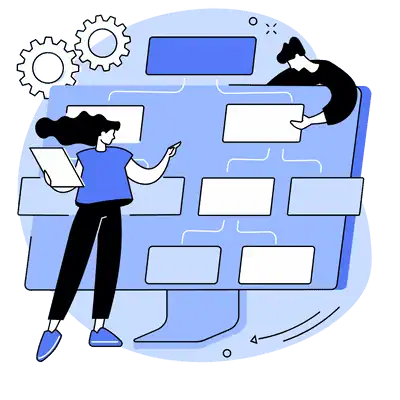
Integration with New Technologies
The up and coming emerging technologies like Virtual Reality (VR) and Augmented Reality (AR) have the potential to change the dating experience in a huge way. VR creates super immersive and realistic settings where users can interact in virtual settings that simulate real-life dates. This will provide a better way to gauge compatibility beyond traditional text and video chats.
VR also lets users explore virtual locations together, giving a much better sense of each other’s personalities and how they interact in different scenarios. AR can improve real-world dates by overlaying digital information onto the physical environment. An AR app will display conversation prompts or interesting facts about the location, making interactions easier and more fun.
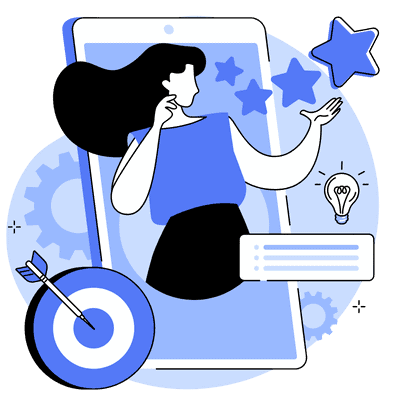
Personalization and Customization
Future compatibility tests will most likely be more personalized and customizable, catering to each user’s unique needs and preferences. Rather than using a one-size-fits-all approach, advancements in technology will mean greater flexibility and specificity in matching.
Personalized tests may be able to consider various factors, like cultural background, lifestyle, and specific relationship goals. This would let the matching process line up more accurately with what each user is seeking. Customization could also extend to the design and structure of the tests themselves—users may be able to prioritize certain traits or values that are most important to them, making the matching process more relevant and targeted.
AI can refine this even further by dynamically adjusting criteria based on ongoing user interactions and feedback, keeping the system responsive to any changing preferences and life circumstances.
The future of compatibility testing on dating apps looks very promising, with advancements in AI and machine learning, integration with VR and AR, and a move towards greater personalization and customization. These innovations are set to increase the accuracy of matching algorithms, which will create a more engaging and enjoyable dating experience. As these technologies continue to develop, they will play a pivotal part in helping people make lasting romantic connections.
Concluding Thoughts
As we wrap up our examination of compatibility tests in the world of online dating, one thing is obvious—these tools have both pros and cons. They want to simplify the sometimes chaotic process of finding a romantic partner by using data and psychology to suggest matches but just like any method of matchmaking out there, they aren’t a perfect process. Then again, what is when it comes to love?
We hit you with a lot of info, so it’s only fair we give you a recap of the main points!
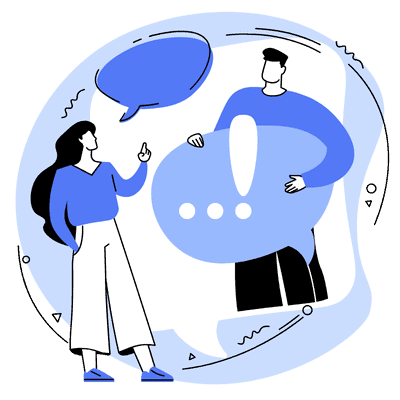
- Purpose of Compatibility Tests: These tests aim to match individuals based on shared values, interests, and personality traits.
- Psychological Foundations: Grounded in theories like the Big Five personality traits, these tests use sophisticated algorithms to analyze user data.
- Benefits: Higher-quality matches due to alignment of compatible traits; Better user experience by making the dating process more efficient; Provides a sense of reassurance and direction for users.
- Criticisms: Oversimplifies complicated human emotions and romantic relationships; Accuracy and reliability in predicting long-term compatibility can be questionable; Potential biases exclude certain people or groups.
Compatibility tests offer a structured, data-driven way to find romantic partners, providing direction and efficiency. They can lead to significant connections by matching users with aligned traits and interests. However, human relationships are complex, and no algorithm can fully capture the nuances of chemistry and attraction. It’s also crucial to recognize and address potential biases and inclusivity issues within these tests.
We’d love to hear about your experiences with compatibility tests. Have they worked for you, or have you found them to be lacking? And if you haven’t taken one yet, if and when you do, keep an eye on their recommendations to see how it works for you!
Additional Resources
For those of you who want to know more about compatibility tests, relationship psychology, and dating app technology, we put together a list of additional resources for your perusal! They can help you understand the theoretical foundations, practical applications, and future trends of these tools in the context of modern dating.
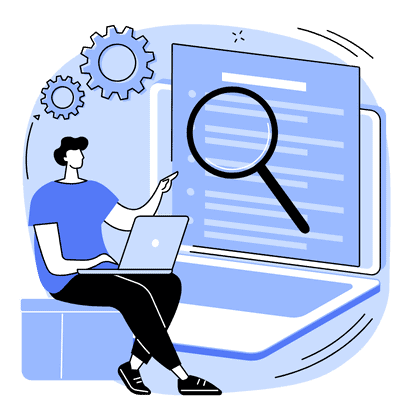
- The Demography of Swiping Right – An overview of how dating apps impact modern relationships.
- Compatibility and Matching in Online Dating – A study on the effectiveness of compatibility tests and other matching methods.
- User Perceptions of AI and Matching Algorithms – Exploring the role of algorithms in matchmaking.
- The Influence of Technology on Romantic Relationships – Understanding the impact of online dating on romantic relationships.
- Modern Love: Scientific Insights from 21st Century Dating – Scientific research on modern romantic relationships.
- Dating and Relationships in the Digital Age – Detailed statistics and insights on digital dating’s effects.
- Swipe-Based Dating Applications and Mental Health – Examining the association between dating apps and mental health outcomes.
- How Virtual Reality Could Change the Way We Date – Discussing the potential future of dating with virtual reality technology.
